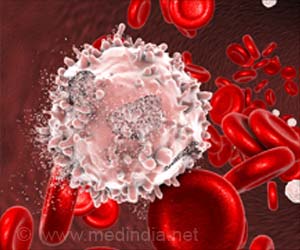Temple scientists solve mystery underlying heart toxicity caused by diabetes drugs named PPAR £\/£^ agonists. They affect mitochondria, the powerhouse of the cell.

‘Dual PPARα/γ agonists cause heart toxicity by producing a significant reduction in the expression and activation of PPARγ coactivator 1-α, which plays a vital role in mitochondrial biogenesis.’
Read More..




"We found that the combined activation of PPAR£\ and PPAR£^ receptors by a single agonist drug, tesaglitazar, blocked the activity of proteins involved in mitochondrial biogenesis and energy production, including a protein known as SIRT1," explained Konstantinos Drosatos, PhD, Assistant Professor of Pharmacology and Assistant Professor in the Center for Translational Medicine and the Center for Metabolic Disease Research at LKSOM and senior investigator on the new study.Read More..
"When we reactivated SIRT1 with resveratrol, an antioxidant widely known for its presence in grape skins, heart toxicity was reduced and the benefits of dual lowering of lipid and glucose levels were maintained in tesaglitazar-treated mice."
The effects of PPAR£\ and PPAR£^ receptor activation are like the fish that researchers are trying to bait. The PPAR£\ receptor binds molecules such as fibrates, which help reduce blood triglyceride levels and increase levels of high-density lipoproteins (HDLs) - popularly known as "heart-healthy" fats. Meanwhile, PPAR£^ receptors attach molecules that help lower blood glucose levels.
The popular diabetes drugs known as thiazolidinediones (TZDs), which include pioglitazone and rosiglitazone (the latter marketed as Avandia), bind to PPAR£^ receptors. Because these drugs given alone have been questioned for cardiac toxicity, the idea emerged for dual PPAR£\/£^ activation by a single drug - the one piece of bait that in theory successfully lures the two fish - the combined lipid- and glucose-lowering effects of PPAR£\/£^ coactivation.
To understand why these new drugs are accompanied by just as much cardiac toxicity, if not more, than TZDs, Dr. Drosatos and colleagues carried out a series of studies in diabetic mice treated with the dual PPARα/γ agonist tesaglitazar. Despite reduced triglyceride and glucose levels in the blood, the mice developed cardiac dysfunction.
Advertisement
The researchers then repeated their experiment, this time treating diabetic mice with tesaglitazar in combination with resveratrol, which serves as an activator of SIRT1. Mice treated with the combination of the two drugs had reduced heart toxicity, relative to tesaglitazar-only therapy, and their heart cells exhibited normal mitochondrial function.
Advertisement
One of the team's next aims is to further elucidate the signaling pathway that moderates the effects of PPAR drugs in order to identify a single target - one worm to catch one really big fish. "By targeting fewer proteins, there should be fewer toxic effects to worry about," Dr. Drosatos added.
Source-Eurekalert












